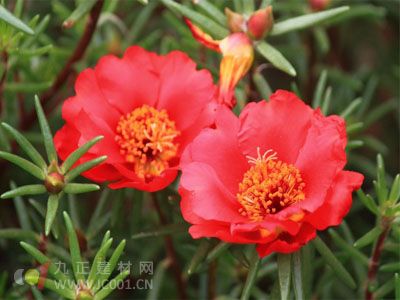Scutellaria barbarum Identification:
Key Characteristics: Scutellaria barbarum typically grows between 15 to 40 cm tall, with the flowering axis either hairless or covered in fine hairs. The roots are slender and fibrous. The stem is quadrangular in shape, featuring a dark purple or brownish-green surface. The leaves are arranged opposite each other, with short or nearly sessile petioles. The leaf blades are lanceolate or narrowly lanceolate, measuring approximately 1.5 cm in width. They are wedge-shaped at the base, with entire margins or occasionally having blunt teeth. The upper surface of the leaves is dark green, while the lower surface is lighter green. The leaves are crisp and brittle, making them easy to break.
The inflorescences appear at the branch tips, with two-lipped corollas that range from brownish yellow to dark blue-purple, about 1.2 cm long. The corolla often separates from the plant, leaving behind a spoon-shaped base and a helmet-like structure. The fruit contains four spherical nutlets, which are light brown in color. The entire plant is soft and easily broken, with a strong, bitter taste. It is preferable to use fresh, bitter samples for optimal quality.
Microscopic Features:
For leaf epidermal examination, the upper epidermal cells are large, polygonal, and measure 55–93 μm in length and 14–40 μm in width. Lower epidermal cells are smaller, ranging from 25–48 μm in length and 11–25 μm in width. Non-glandular hairs are 1–2 cells in length, conical in shape, with ridged walls and radial thickening at the base. Hairs near the leaf margin are 1–3 cells long, measuring 48–141 μm. Glandular scales are more abundant on the lower surface. The glandular heads are spherical or ovoid, consisting of 7–8 cells with a diameter of 50–75 μm. Glandular hairs are present on the epidermis, with 4-cell structures. The glandular head measures around 28 μm in diameter, and the stalk is single-celled. Stomata are found on the lower epidermis, with a straight axis.

Physical and Chemical Identification:
1. Take 10 grams of the powdered sample and add 50 ml of 80% ethanol. Heat under reflux for 30 minutes, then filter while hot. Use the filtrate for further tests.
2. Add a small amount of magnesium powder and 4 drops of concentrated hydrochloric acid to 1 ml of the filtrate. A reddish color will gradually develop, indicating the presence of flavonoids.
3. Add 1–2 drops of 1% ferric chloride solution to 1 ml of the filtrate. A dark green color appears, confirming the presence of phenolic compounds.
4. Evaporate the remaining filtrate to dryness on a water bath. Dissolve the residue in 5 ml of 5% hydrochloric acid, then filter. Add 1–2 drops of cesium iodide, potassium iodide, and tungstic acid solutions to three separate test tubes. A precipitate forms, indicating the presence of alkaloids.
5. For thin-layer chromatography (TLC), take 2 grams of the sample (20 mesh) and extract it with 10 ml of ether by refluxing for 30 minutes. Decant the ether layer, then dissolve the residue in 15 ml of methanol and reflux again for 30 minutes. Cool, filter, and use the filtrate as the sample. Apply 10 ml of the sample onto a silica gel H plate (with 0.5% CMC binder), activated at 110°C for 30 minutes. Develop using toluene-ethyl formate-formic acid (3:3:1). Observe the spots under a UV lamp at 365 nm after a migration distance of 12 cm.
Smart PDLC Film for Car Window, transparent when power on, opaque when power off, PDLC Privacy Car Window Tint, Smart Car Tint, with 3 colors, dark grey Car Smart Tint, Light Grey Switchable Car Film,White Car Magic Glass Film
Car Smart Film,Smart Tint Fim,Pdlc Electric Smart Car Film,Car Winow Smart Film
Shenzhen YuGuang New Material Co.,Ltd , https://www.ygsmartfilm.com